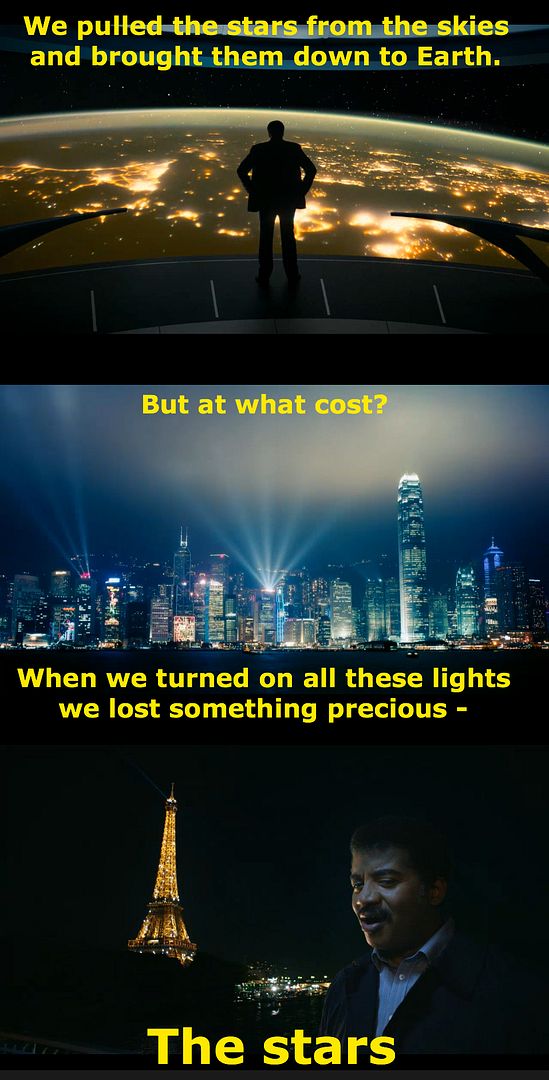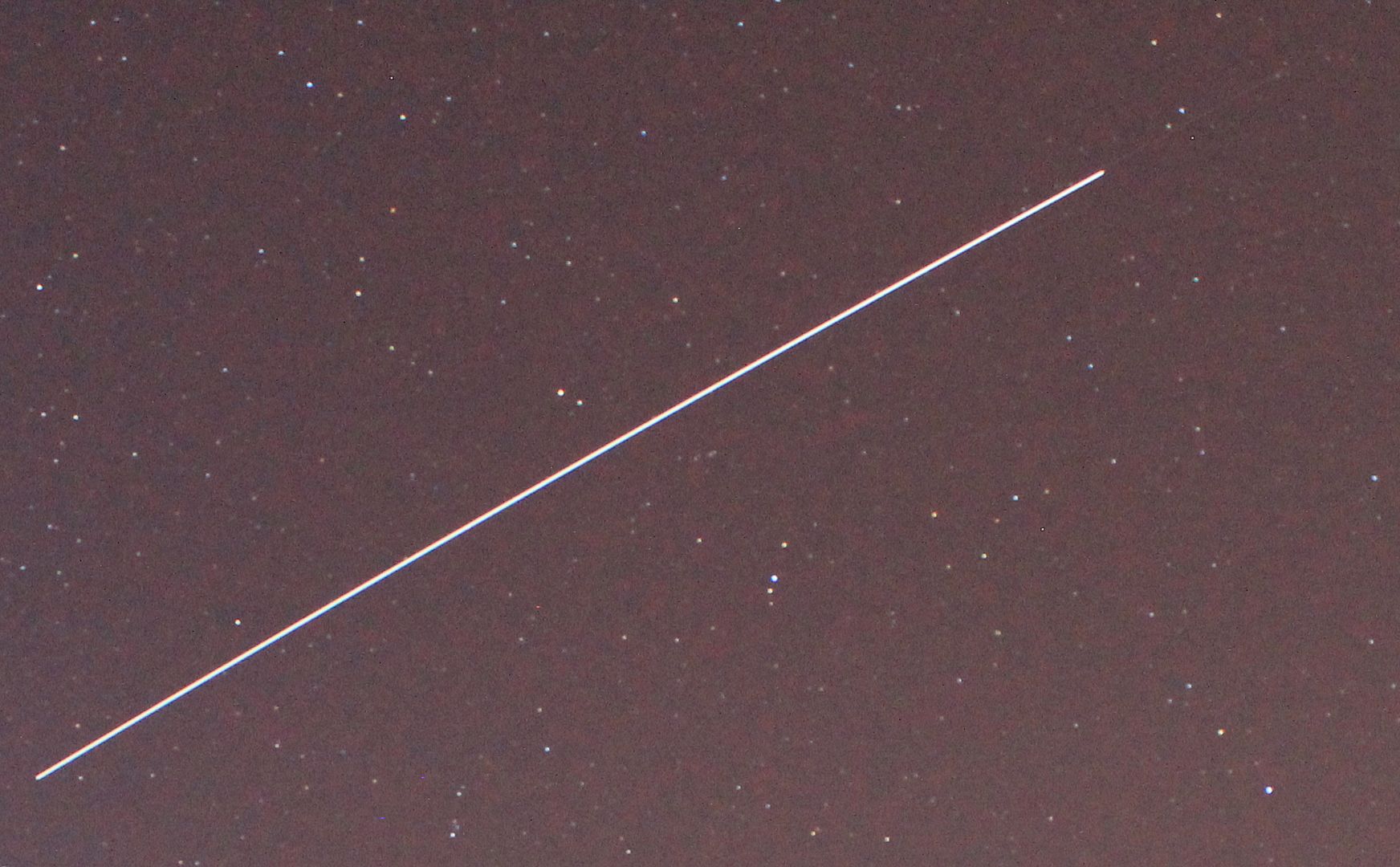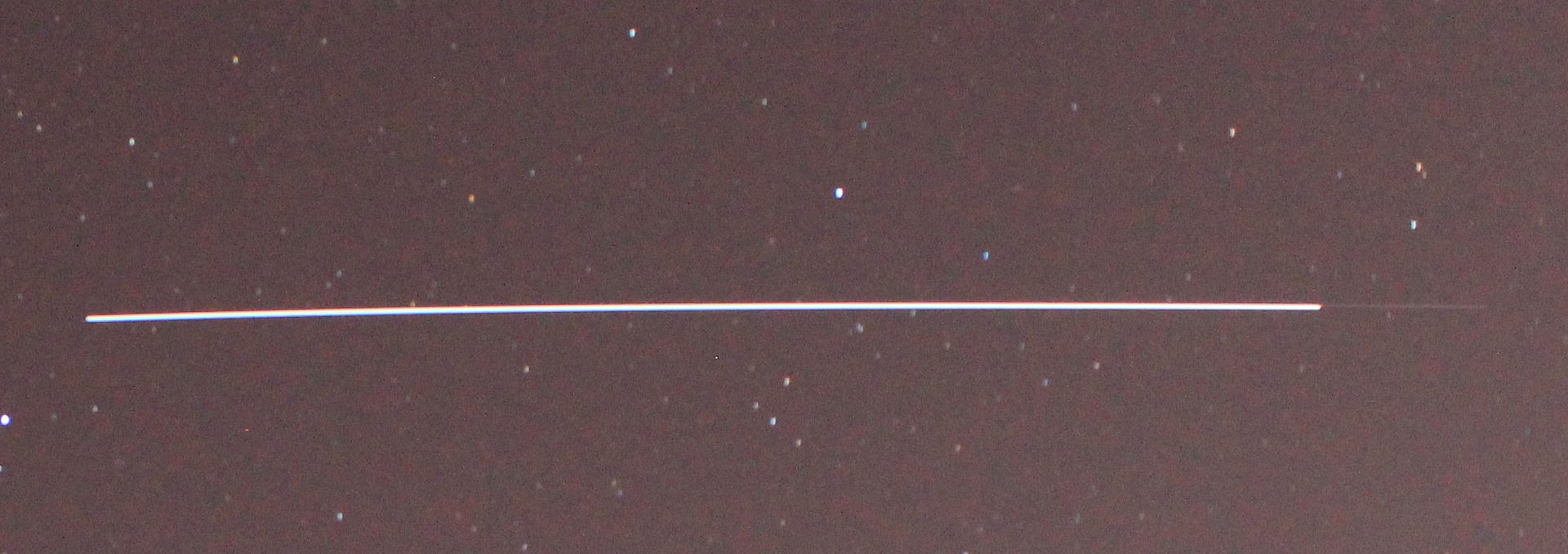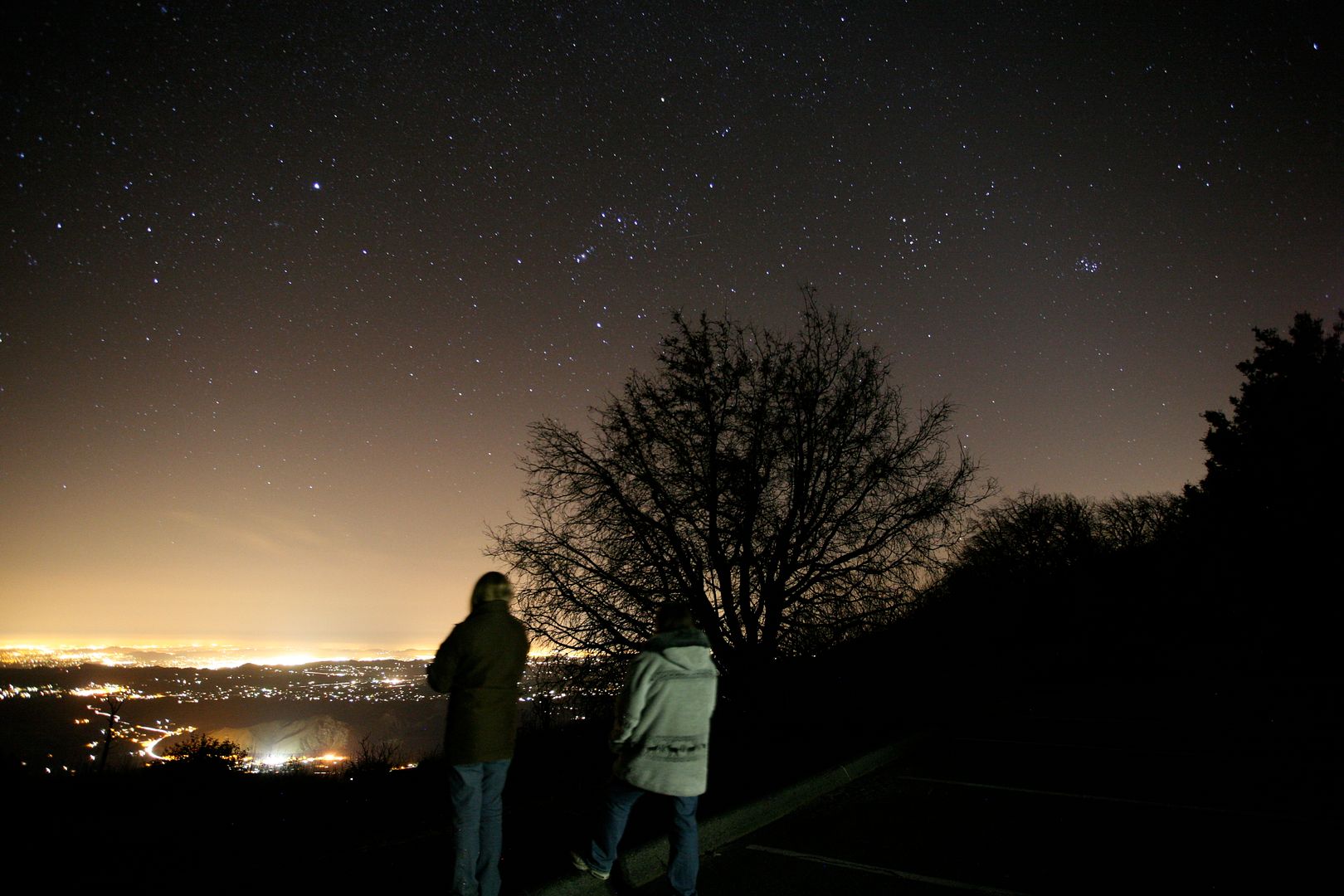Hey, Cosmos: A Spacetime Odyssey mentioned light pollution in last Sunday's episode. Well, sort of. Here's everything that was said about it:
It was a good episode and it was nice to see an acknowledgement of the problem - even if it was pretty brief. If you missed it, you can watch it here.
Tuesday, April 29, 2014
Sunday, April 27, 2014
Telescope Tourist: Observatorio del Roque de los Muchachos
Back in 2007 I had the opportunity to attend the Starlight Conference on the island of La Palma, a member of the Canary Islands. While I was there I gave a talk on Palomar Observatory and light pollution.
I also had a chance to visit the summit of the mountain and the Roque de los Muchachos Observatory.
The view from the summit, located 2426 meters above sea level, was one of the most spectacular places I've ever visited. The observatory is located a bit lower in elevation and contains an impressive array of world-class telescopes.
Our first stop was the 17-meter MAGIC Telescope. It is an giant array of 270 mirrors that work together as one telescope mirror (effectively the world's largest) much like the VERITAS telescopes at Whipple Observatory. The telescope isn't used to image astronomical objects in the conventional sense, rather it is used to detect the Cherenkov radiation light from particle showers that are produced as high energy gamma rays smack into our atmosphere. The data helps astronomers to study gamma-ray bursts, supernovae, black holes and other astronomical objects.
As you can see, MAGIC has no dome. It is out there in the elements, something that takes some getting used to.
During my visit, there was a smaller array next to MAGIC, I believe that it was built to test the concept and is now gone. A second, full-sized, MAGIC telescope was added to the site in 2010.
Our next stop was the 4.2-meter William Herschel Telescope.
Our guides put the telescope through the paces and even gave us a look at its primary mirror:
The telescope is used for studies conducted in visible and near-infrared light.
Looking up from the site of the William Herschel Telescope it was possible to see some other installations at the observatory.
On the left is the 1-meter Swedish Solar Telescope and on the right is the Dutch Open Telescope. Unfortunately, I didn't get a close look at either one.
Another telescope that I only saw from the outside was the 3.6 meter Telescopio Nazionale Galileo.
Thankfully, I did get a wonderfully close look at the 10.4 meter Gran Telescopio CANARIAS.
The GTC is a telescope with a segmented primary mirror, much like the Keck telescope in Hawai'i. I didn't have a wide enough lens to capture the whole thing in one shot. Above is the top of the telescope with the secondary mirror. Panning downward, I took this second photo:
Here you can see several of the thin primary mirror segments and the active optics actuators (white cylinders above the white boxes) that help to keep the segments all pointed and aligned correctly.
This is an even closer look from the side at the mirror segments (at top) and some of the actuators.
Here's the view looking up at the telescope's secondary mirror.
The GTC was still under construction during our visit. First light for the telescope took place later in 2007 (with only some of the mirror segments installed). Full operations began in 2009.
It is always nice to tour an astronomical observatory. The Observatorio del Roque de los Muchachos is one of the world's most impressive collection of astronomical telescopes and I am very glad I had the chance to make the visit.
 |
| That's me, at right. |
The view from the summit, located 2426 meters above sea level, was one of the most spectacular places I've ever visited. The observatory is located a bit lower in elevation and contains an impressive array of world-class telescopes.
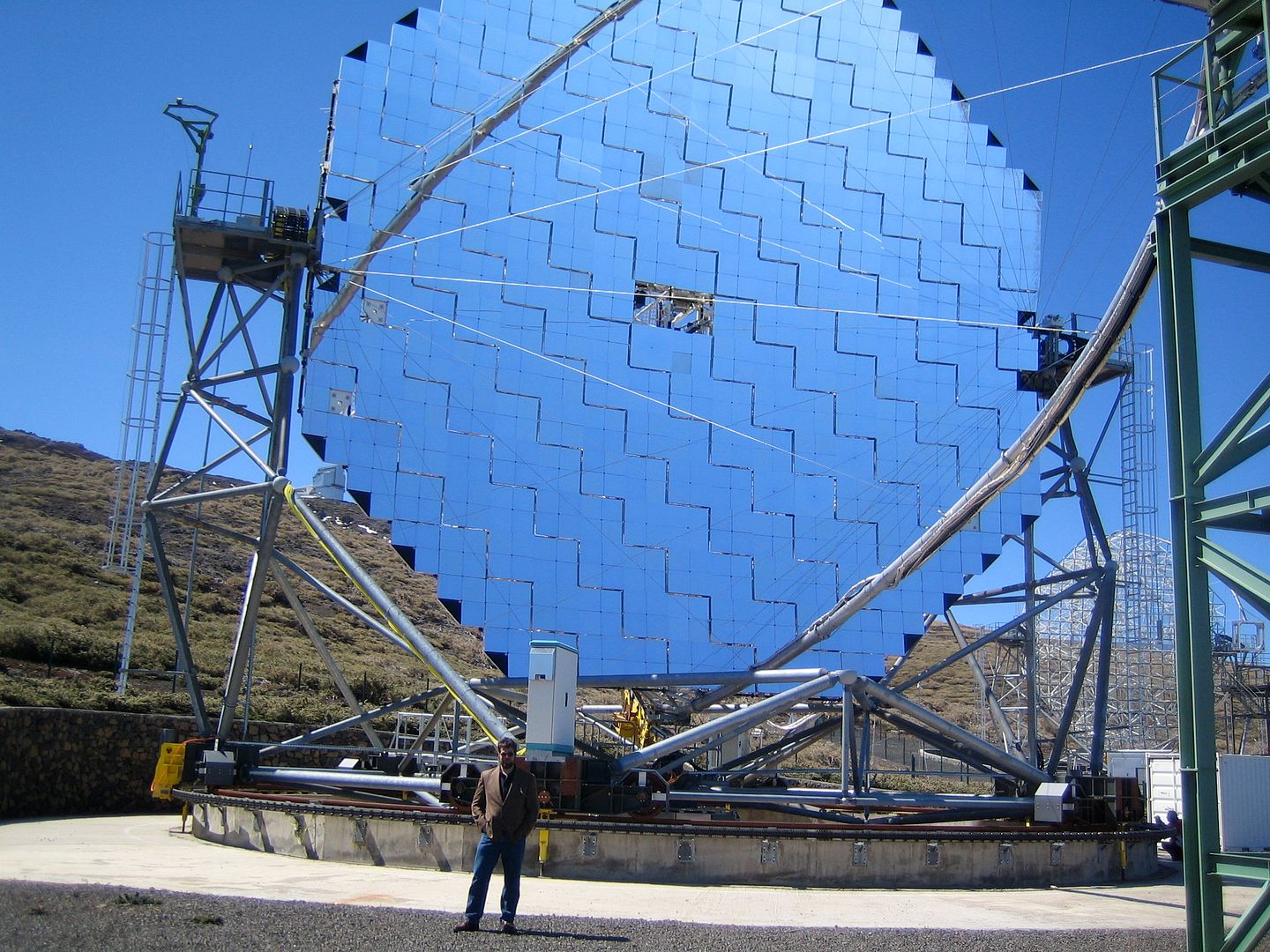 |
| Here I am with the MAGIC Telescope. |
As you can see, MAGIC has no dome. It is out there in the elements, something that takes some getting used to.
During my visit, there was a smaller array next to MAGIC, I believe that it was built to test the concept and is now gone. A second, full-sized, MAGIC telescope was added to the site in 2010.
Our next stop was the 4.2-meter William Herschel Telescope.
Our guides put the telescope through the paces and even gave us a look at its primary mirror:
The telescope is used for studies conducted in visible and near-infrared light.
Looking up from the site of the William Herschel Telescope it was possible to see some other installations at the observatory.
On the left is the 1-meter Swedish Solar Telescope and on the right is the Dutch Open Telescope. Unfortunately, I didn't get a close look at either one.
Another telescope that I only saw from the outside was the 3.6 meter Telescopio Nazionale Galileo.
Thankfully, I did get a wonderfully close look at the 10.4 meter Gran Telescopio CANARIAS.
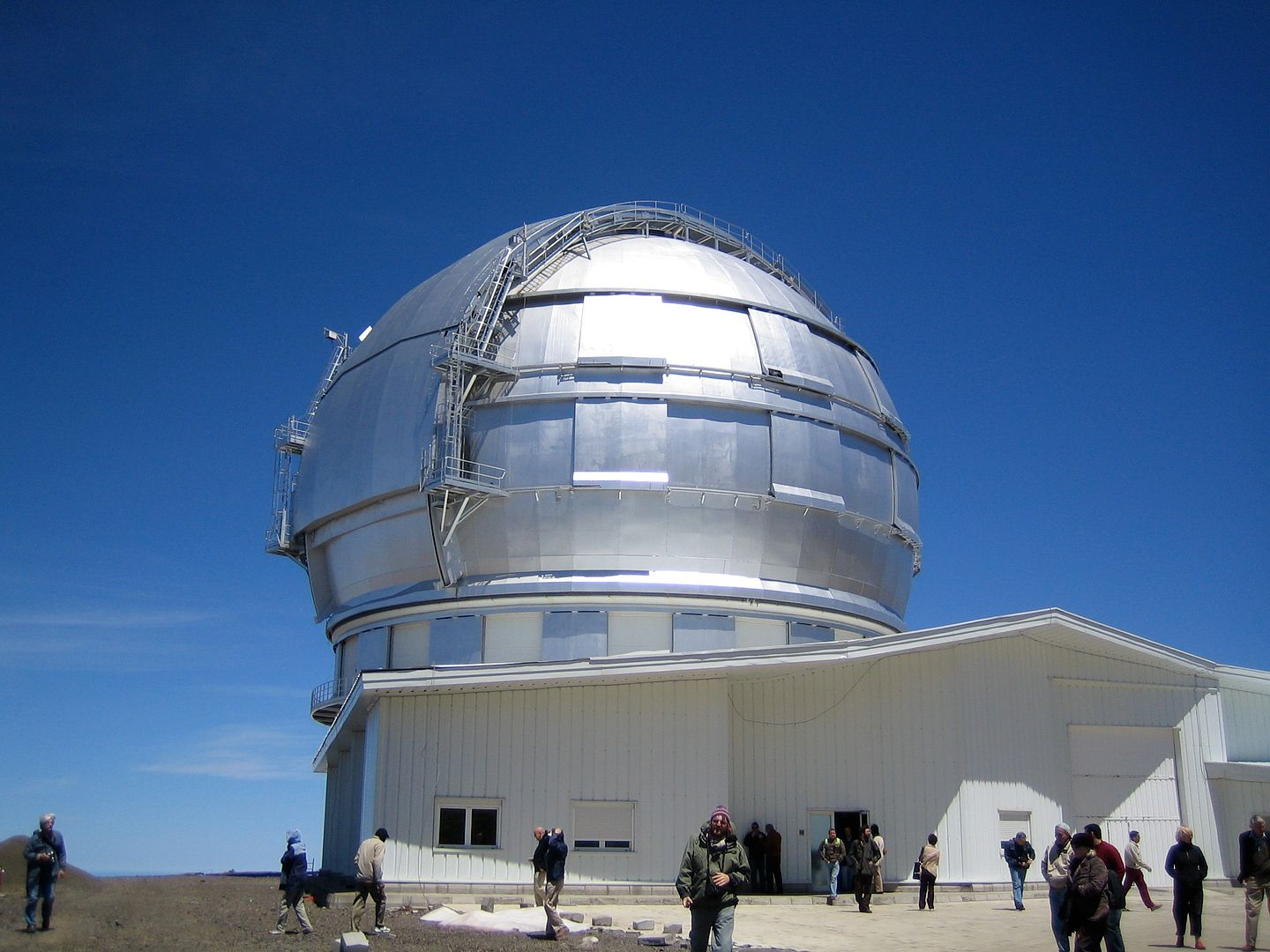 |
| The silver dome of the GTC |
Here you can see several of the thin primary mirror segments and the active optics actuators (white cylinders above the white boxes) that help to keep the segments all pointed and aligned correctly.
This is an even closer look from the side at the mirror segments (at top) and some of the actuators.
Here's the view looking up at the telescope's secondary mirror.
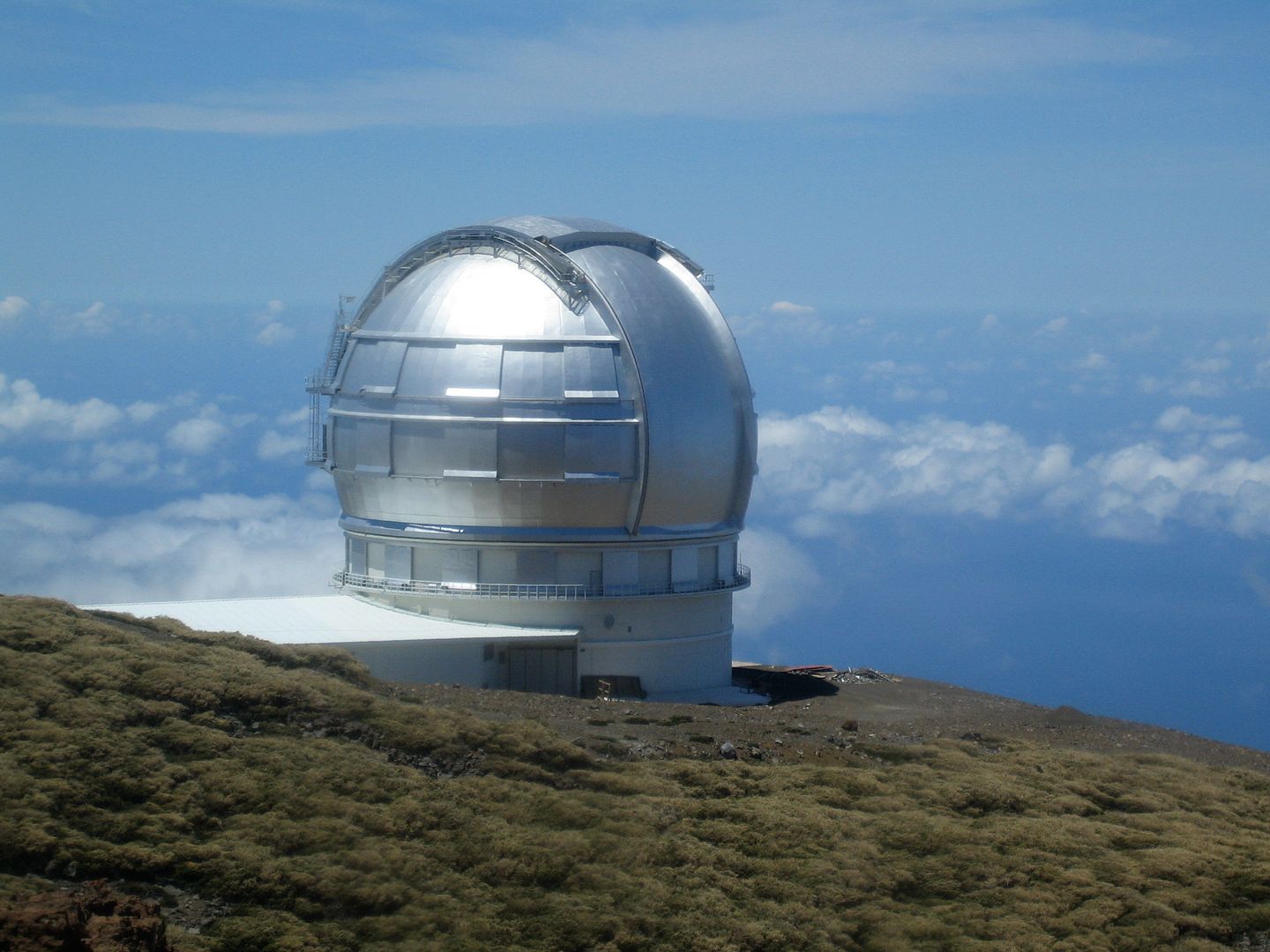 |
| Looking down on the dome of the GTC, clouds and the Atlantic Ocean. |
It is always nice to tour an astronomical observatory. The Observatorio del Roque de los Muchachos is one of the world's most impressive collection of astronomical telescopes and I am very glad I had the chance to make the visit.
Thursday, April 24, 2014
Satellites! Progress is Their Middle Name
It was a good evening for watching satellites as there was an iridium flare, the International Space Station and an unexpected bonus.
The streak at left is the International Space Station (ISS). The small one to the right is the iridium flare which I unfortunately caught just moments after its maximum brightness. There's also a jet contrail in the image running somewhat horizontally underneath them.
As the ISS climbed higher in the northern sky I noticed the unexpected bonus. It is probably a bit hard to see here, so let's look at a crop from the full frame:
Can you spot it? Look at the bright, trailed streak of the ISS and notice that there is a fainter line out ahead of it. According to NASA that is the trail of the Progress 53 cargo craft that is currently undocked from the ISS. It is easier to see in the next shot.
It is relatively easy to see the Progress module, but here's the crop of the full frame to make it even easier to see:
Again, the bright light is the full ISS and the faint line is the Progress module that is currently leading the ISS in orbit. According to the NASA site I linked above the Progress is doing "two days of free-flying orbital tests" and will re-dock with the ISS on Friday morning.
The Progress module is so much fainter than the ISS because it is so much smaller than the ISS. It checks in at being 7.23 meters long, whereas the ISS is about the size of a football field.
The first time I ever saw co-orbital satellites like this was back in the day when the Space Shuttle was visiting the Russion Mir space station. It was pretty exciting back then and certainly great fun to see something similar tonight.
Here's my last view of the ISS as it passed behind my palo verde tree. It was a nice evening for watching satellites and enjoying the moonless skies of International Dark Sky Week.
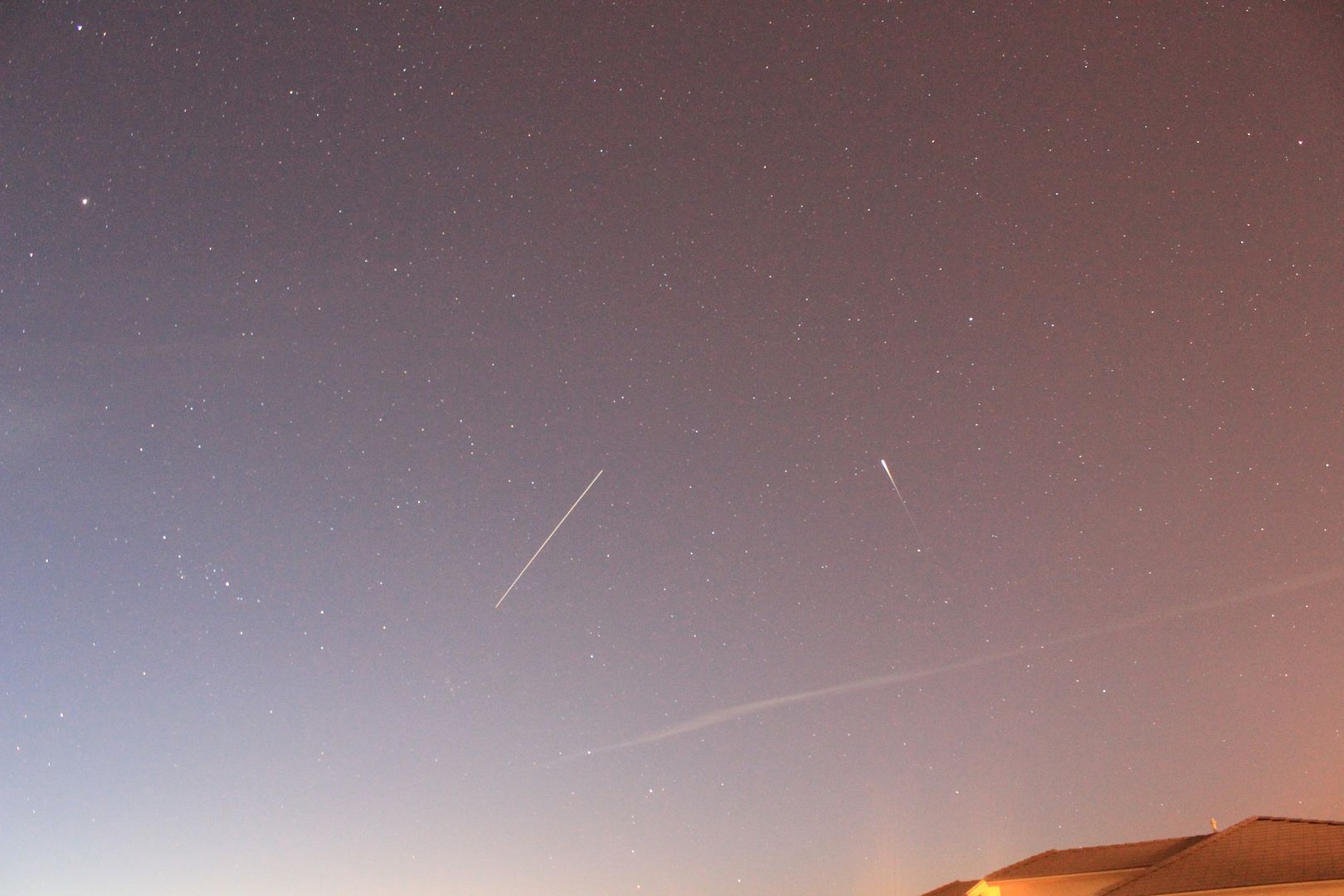 |
| ISS & Iridium Flare Canon T3i, 18mm, 30 sec., ISO 3200 |
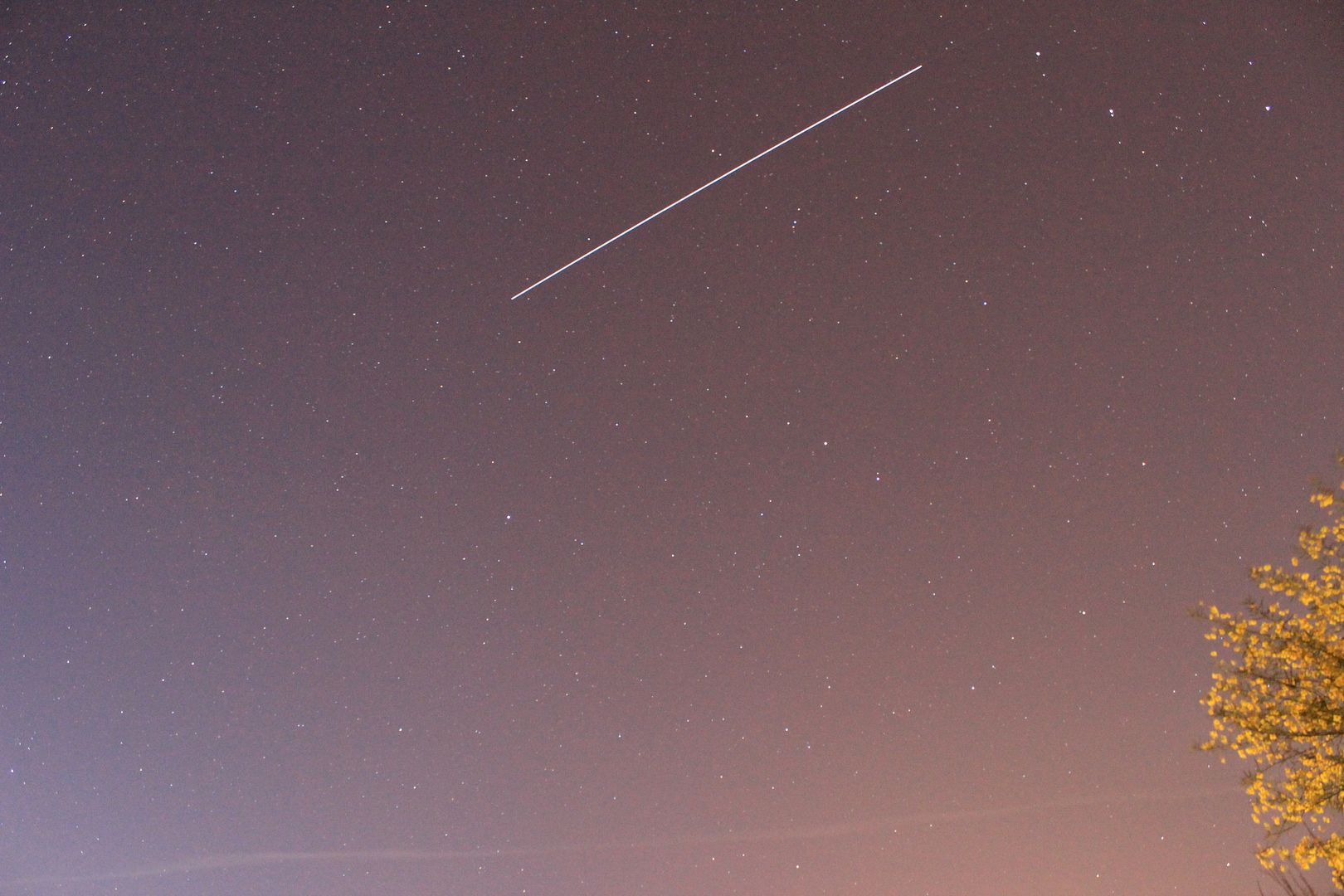 |
| ISS & Progress Module Canon T3i, 18mm, 30 sec., ISO 3200 |
Can you spot it? Look at the bright, trailed streak of the ISS and notice that there is a fainter line out ahead of it. According to NASA that is the trail of the Progress 53 cargo craft that is currently undocked from the ISS. It is easier to see in the next shot.
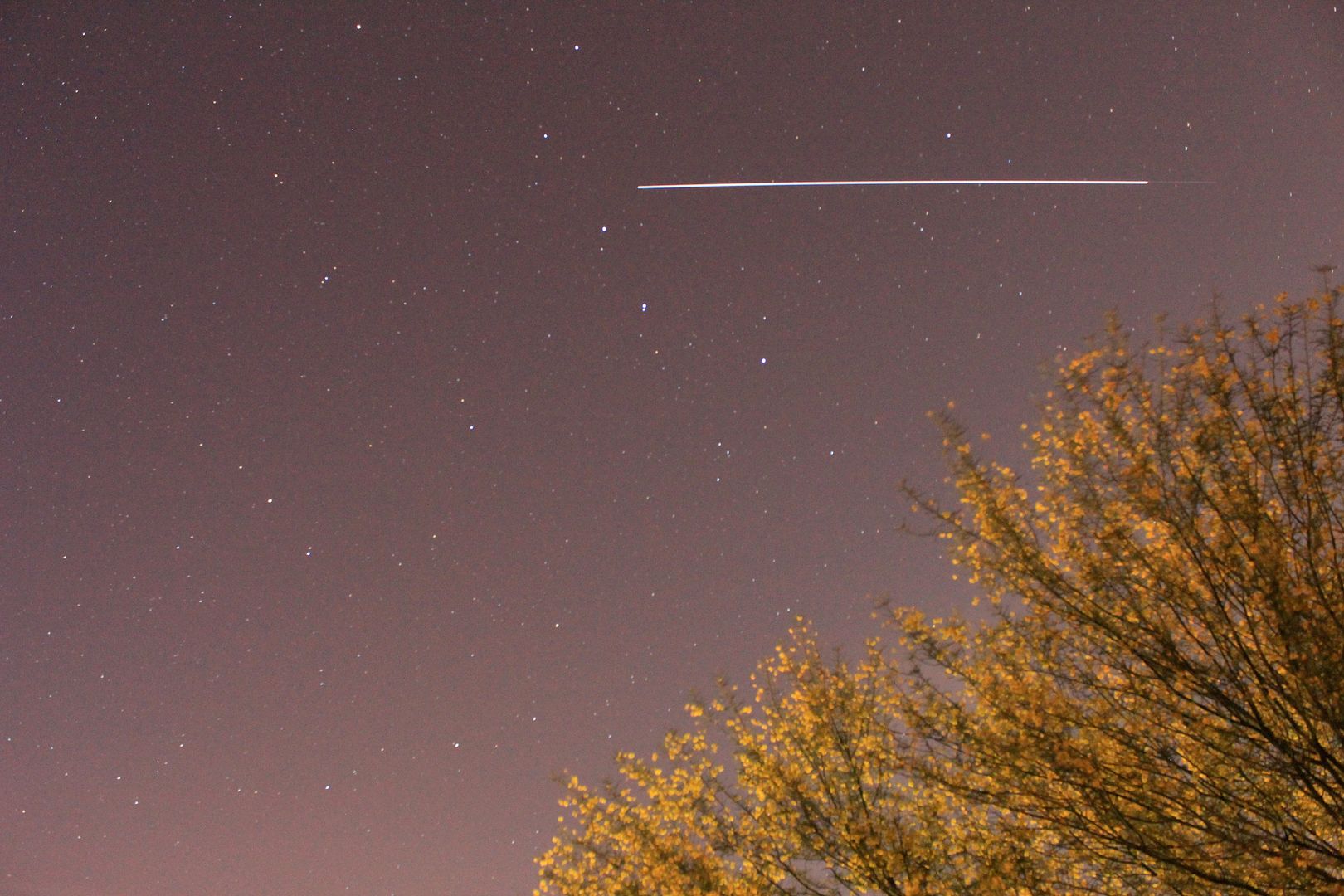 |
| ISS & Progress Module Canon T3i, 18mm, 30 sec., ISO 3200 |
Again, the bright light is the full ISS and the faint line is the Progress module that is currently leading the ISS in orbit. According to the NASA site I linked above the Progress is doing "two days of free-flying orbital tests" and will re-dock with the ISS on Friday morning.
The Progress module is so much fainter than the ISS because it is so much smaller than the ISS. It checks in at being 7.23 meters long, whereas the ISS is about the size of a football field.
The first time I ever saw co-orbital satellites like this was back in the day when the Space Shuttle was visiting the Russion Mir space station. It was pretty exciting back then and certainly great fun to see something similar tonight.
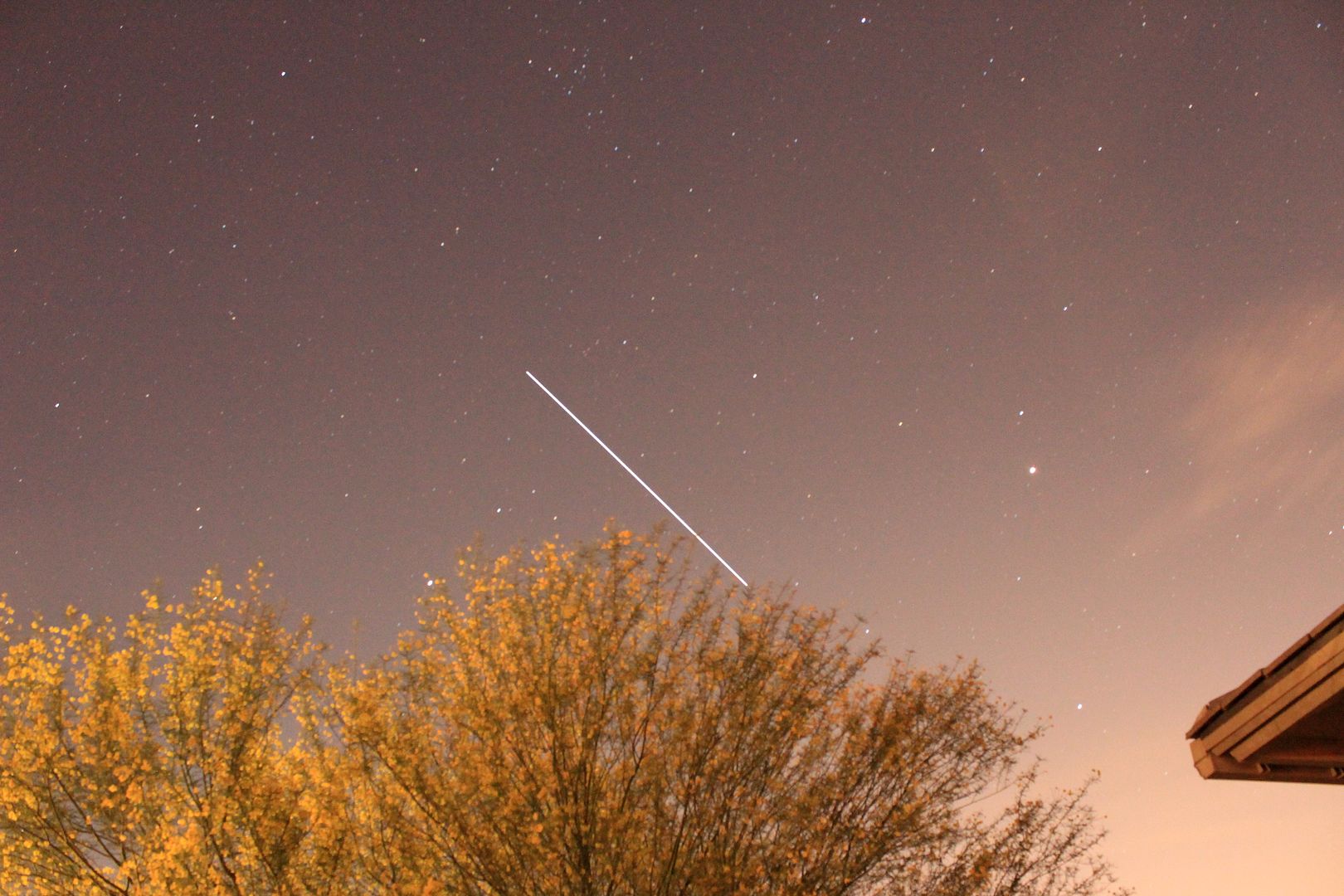 |
| ISS & Progress Module Canon T3i, 18mm, 30 sec., ISO 3200 |
Sunday, April 20, 2014
Star Trek - Light Pollution Graphics
It is International Dark Sky Week (#IDSW2014). Since doing something about light pollution is important and because I'm something of a Star Trek geek and haven't posted about Trek here in a while, I thought I would make a few graphics that combine the two. There's even one from TNG.
If anyone actually likes these (I may be the only one), please feel free to share them.
If anyone actually likes these (I may be the only one), please feel free to share them.
Saturday, April 19, 2014
International Dark Sky Week April 20 - 26 2014
Welcome to International Dark Sky Week!
Everyone who cares about astronomy should be concerned about the problem of light pollution, but there are lots of reasons to want to take action on light pollution beyond just the loss of the night sky. Light pollution is caused by excessive use of light at night which in turn is a waste of energy that negatively impacts ecosystems, decreases visibility and even has impacts on our own health.
To learn more about the problems of light pollution, how to measure it, and what you can do about it all head on over to the International Dark-Sky Association's web pages for International Dark Sky Week.
You might also want to check out the blog post I wrote about International Dark Sky Week for Astronomers Without Borders.
Everyone who cares about astronomy should be concerned about the problem of light pollution, but there are lots of reasons to want to take action on light pollution beyond just the loss of the night sky. Light pollution is caused by excessive use of light at night which in turn is a waste of energy that negatively impacts ecosystems, decreases visibility and even has impacts on our own health.
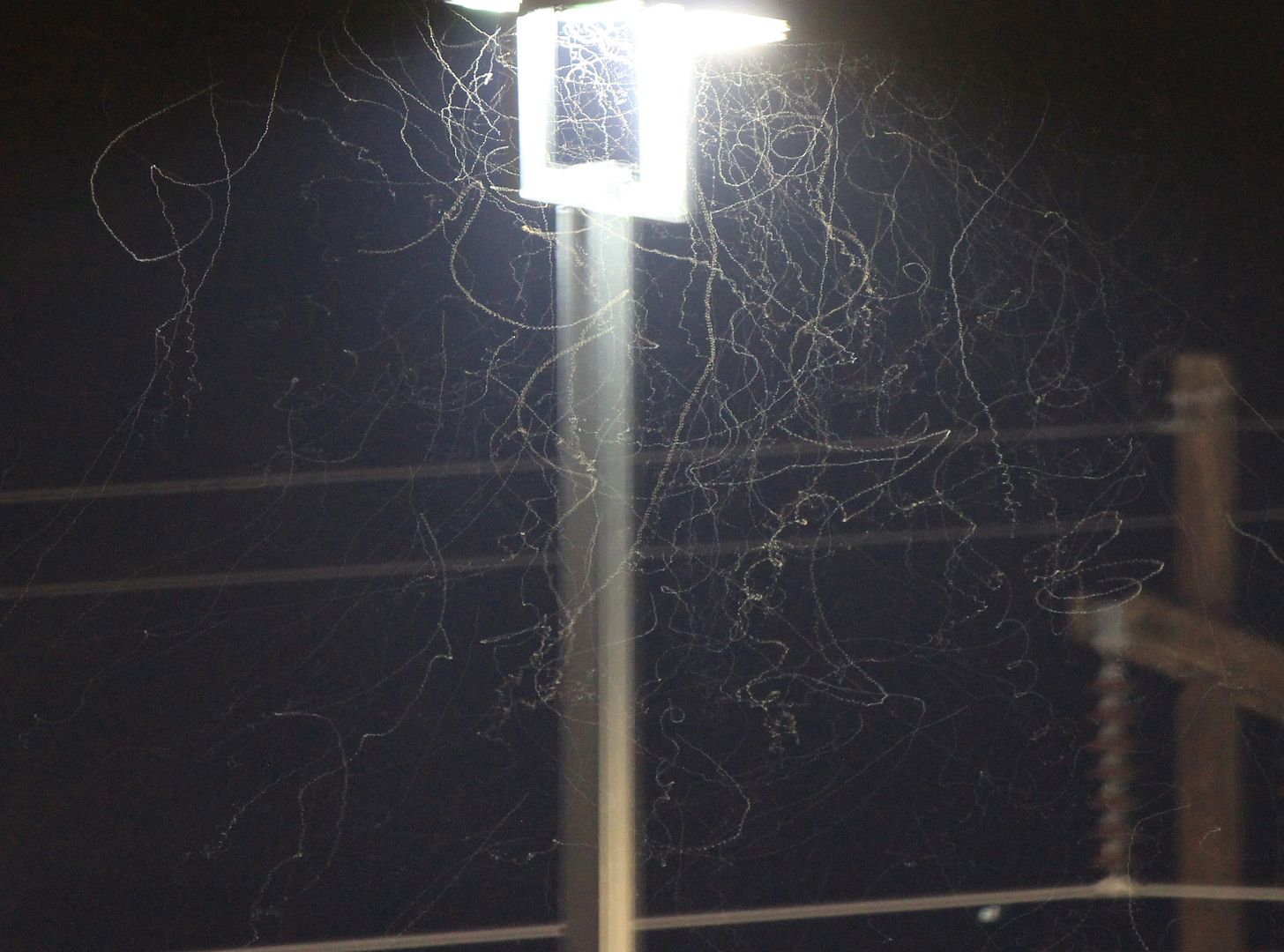 |
| Insects attracted to light at night |
You might also want to check out the blog post I wrote about International Dark Sky Week for Astronomers Without Borders.
Subscribe to:
Posts (Atom)
